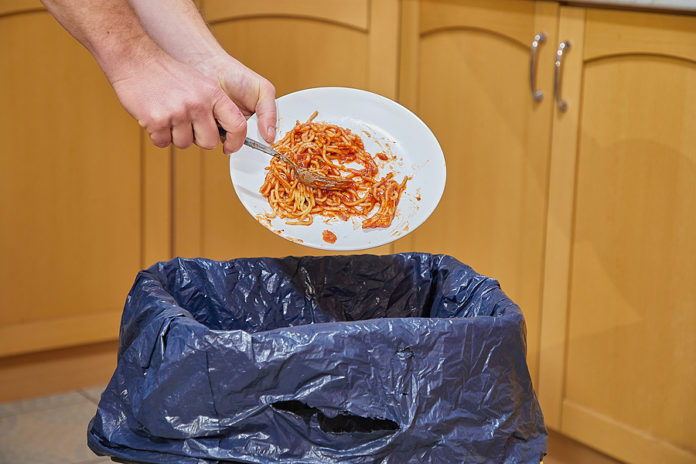
The amount of food wasted in the U.S. is immense — enough to feed 150 million Americans per year, according to the EPA’s new report From Farm to Kitchen: The Environmental Impacts of Food Waste. To put that in perspective, 35 million Americans are food insecure.
The report examines the different stages of the food supply chain to identify the biggest areas of food loss and waste and determine opportunities for improvement.
The food waste and loss problem
More than one-third of food produced in the United States is not consumed. Wasted food generates a huge amount of food waste, accounting for 24% of what’s sent to landfills and 22% of combusted municipal solid waste. It also wastes resources, including agricultural land, water, pesticides, fertilizers, and energy, and has several environmental impacts — contributing to greenhouse gas (GHG) emissions, climate change, and the loss of biodiversity, as well as degrading air, soil, and water resources.
In 2015, the U.S. committed to halving food loss and waste by 2030, but, according to the report, we’ve “not yet made significant progress.” If we were to make progress, though, the impact would be huge, not just domestically but globally. Currently, the U.S. accounts for 10% of global food loss and waste despite having less than 5% of the global population. Our average food waste per person is also roughly one-third higher than is found in other high-income countries.
Cutting food waste and loss in half would save:
- Enough water and energy to supply more than 20 million homes
- GHG emissions equal to 23 coal-fired power plants
- An area of agricultural land as large as Arizona
Where does most food loss and waste come from?
The report divides the “cradle-to-customer food supply chain” into four segments: primary product, distribution and processing, retail, and consumption. Overall, the consumption stage (households and restaurants) is responsible for roughly half of food loss and waste. The authors note that the environmental impact of waste gets worse as you go further down the supply chain because the impact is additive: food that’s thrown away by a household still uses all of the same resources at the earlier stages as food that’s consumed.
- Fruits and vegetables are the most commonly wasted foods, followed by dairy and eggs, and then grains. Fruits and vegetables also use high amounts of pesticides and fertilizers.
- Animal products make an outsized contribution to the environmental impact of the sector as a whole. They require the most land, water, fertilizer, and energy and emit the most GHGs per unit of food, but they make up a relatively small share of food waste and loss.
Where are the biggest opportunities to reduce the environmental impact of food loss and waste?
The report concludes with three recommendations for putting the U.S. on the path to meet its goal of halving food waste by 2030:
- Prevention is better than recycling. As with many things, an ounce of prevention is worth a pound of cure when it comes to food loss and waste. The authors conclude that the greatest benefits will come from avoiding the production of food that will eventually be wasted, rather than recycling food once it’s produced. “Recycling will not…’undo’ the impacts of primary production.”
- Focus on households, restaurants, and food processing. Reducing food waste at the consumption stage in households and restaurants will provide the largest benefits in terms of energy and GHG emissions. One study found that halving waste in these two sectors along with food processing will achieve the bulk of the desired environmental benefits.
- Focus on animal products, fruits and vegetables, and grains. Since animal products have an outsized impact on the environment, and fruits, vegetables, and grains are commonly thrown away, these food categories represent the greatest opportunity for improvement.








